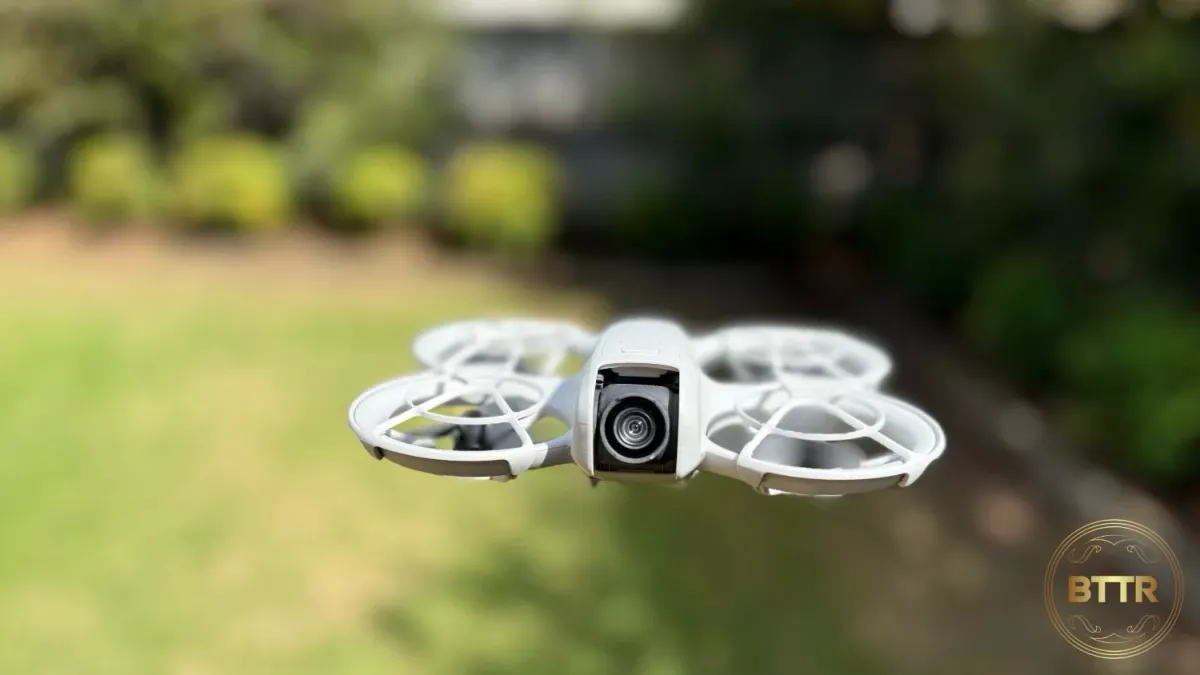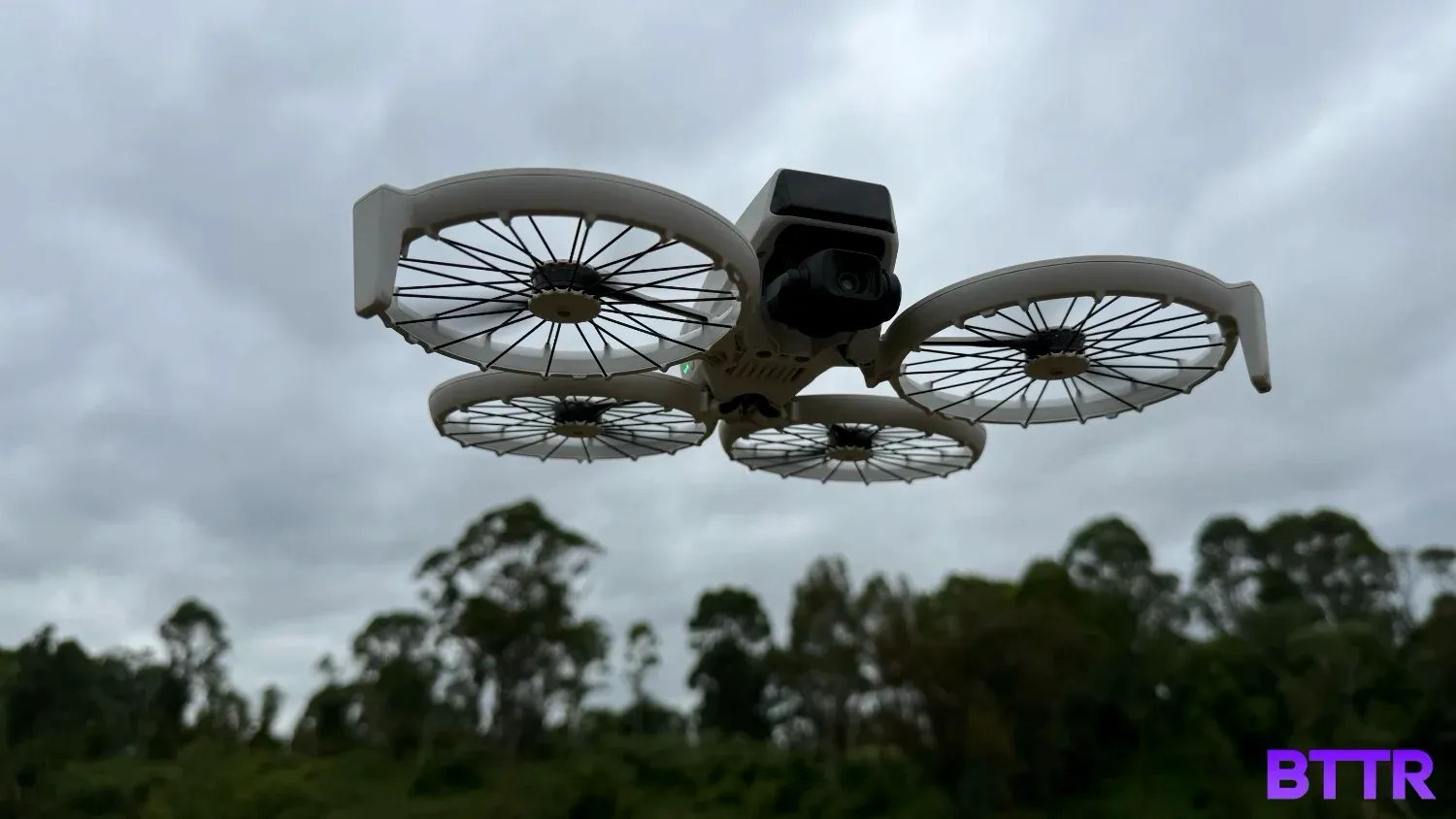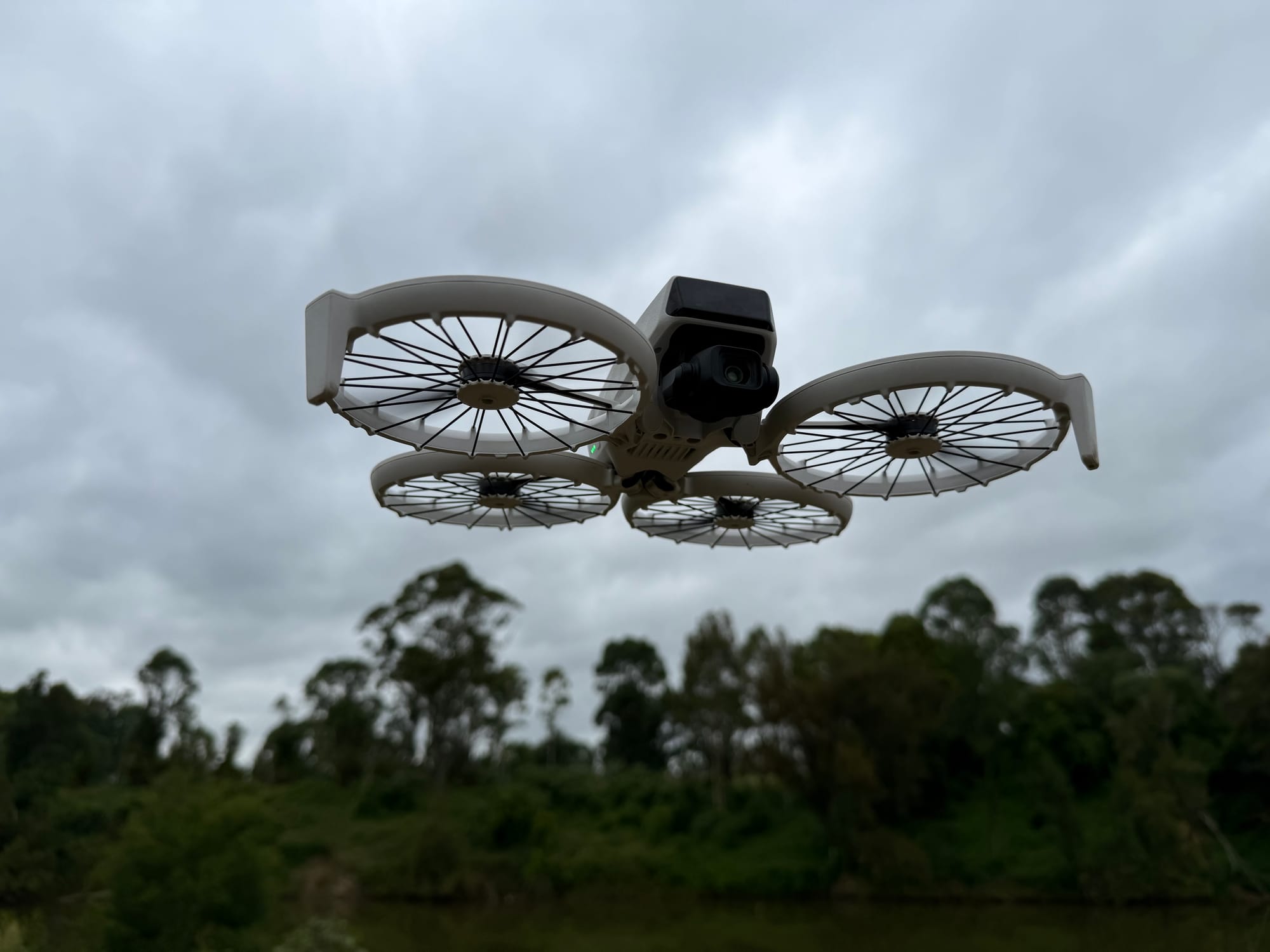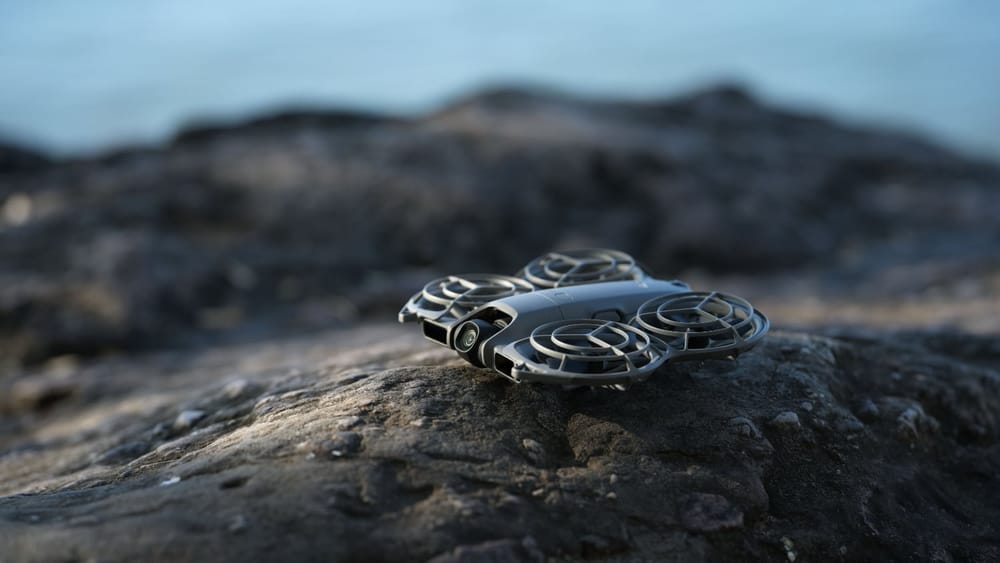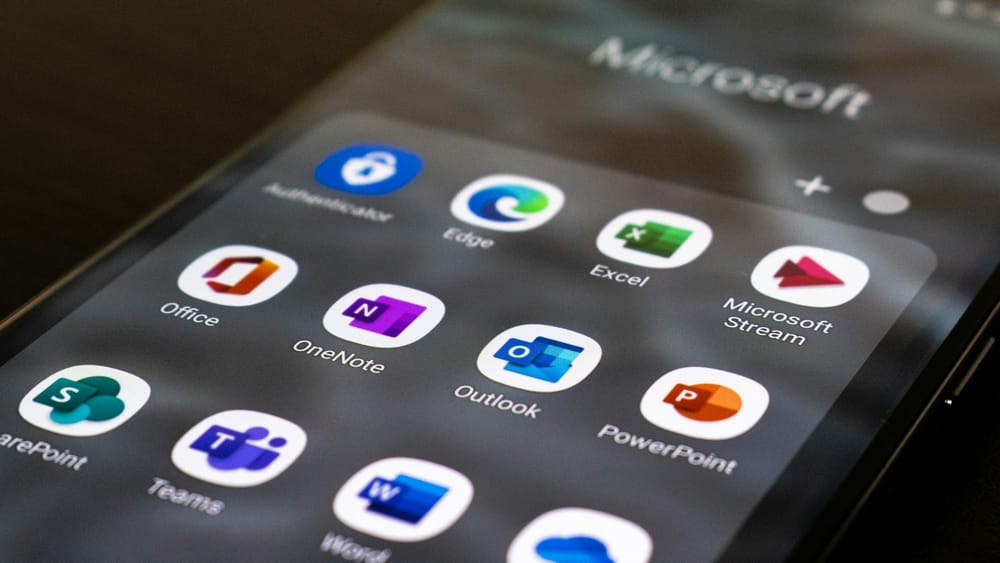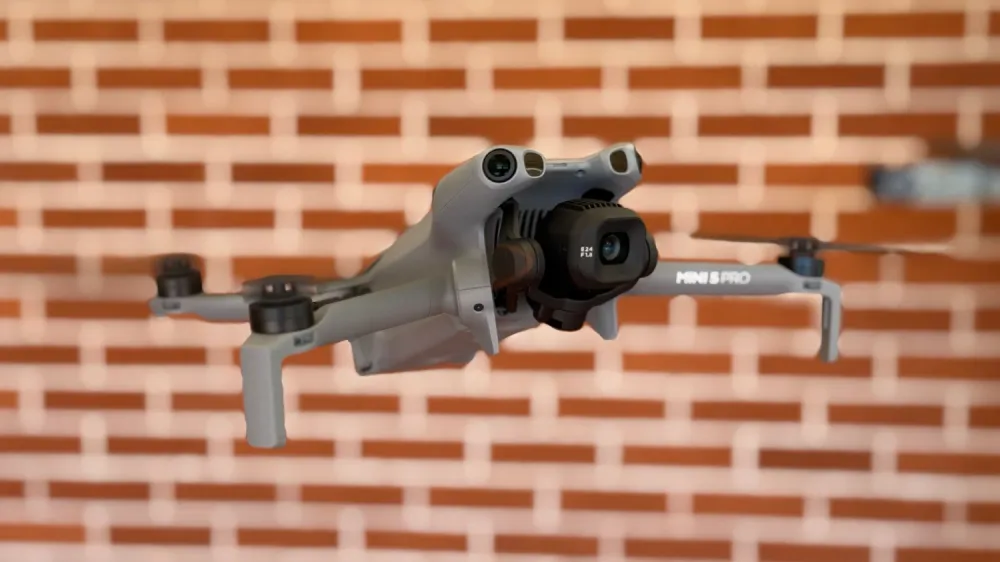BTTR is independent, but we may earn money when you purchase through links on our site.
Pros
- Straightforward controls
- Lightweight and affordable
- Really solid camera
Cons
- Only 2 GB on board storage
- No rear or top proximity sensors
- Audio requires work
I never saw myself as a drone guy. While I love the idea of flying my own little piece of tech around the world, I’ve always just been too lazy to actually do it.
The DJI Neo challenged that perception, thanks to its effortless controls that meant I could get simple, high-quality footage without really needing to know how to fly a drone.
But the DJI Flip has taken that to a whole other level. While the Neo was perfect for beginners, it also lacked the features and performance to make it really appeal to anyone apart from newcomers. Battery life was a big hurdle.
The Flip builds on the Neo by offering the same controller-free controls. But thanks to its redesigned, folding propellors that turn it into a larger, more powerful drone without adding significant weight.
That means you get more flight time, more safety features and better controls in a drone that weighs about the same and is just as easy to control.
It’s a little pricier, but I think it’s worth it. If you’re after your first drone, I think this is an even better place to start than the Neo, which was one of my favourite products of 2024.
What is the DJI Flip offering?
The DJI Flip gets its name from the fact its four propellors all fold down to make the drone more compact and portable. To fly it, you need to “flip” each propellor out before taking off.
Because of this redesign, the drone is significantly larger than the Neo when opened up, though roughly the same size when packed away. It weighs the same 249 grams, but each propeller is made with a unique support structure that is only 1/60th of the weight of a traditional guard.
This weight drop means DJI could make some significant upgrades to the battery and camera.
The battery boost is significant, jumping from 18 minutes of flight time with the Neo to 31 minutes of flight time on the Flip.
The camera, meanwhile, is a 1/1.3-inch CMOS sensor that allows for 48MP photos with up to a 4x zoom, with an f/1.7 aperture.
It records 4K HDR at 60 frames per second, with 4K/1000fps slow motion recording available as well. The 4:3 CMOS sensor is big enough to allow for 9:16 vertical cropping, so you can record videos for social media at 2.7K resolution without any special editing required.
What does the DJI Flip do well?
The design of the DJI Flip is masterful. The compact, folded down body is easily transported in a bag, with its propellers feeling safe and secure when packed away.
Opening the propellors automatically powers on the drone, so you’re ready to fly as soon as possible as well.
Like the Neo, there are several automatic shooting modes that you can launch directly from your hand, so you don’t even need to control the drone at all. These include Follow, Dronie, Circle, Rocket, Spotlight, and Direction Track.
This makes the Flip a brilliant companion for content creators looking for a versatile camera that creates dynamic shots without the need for a second cameraperson.
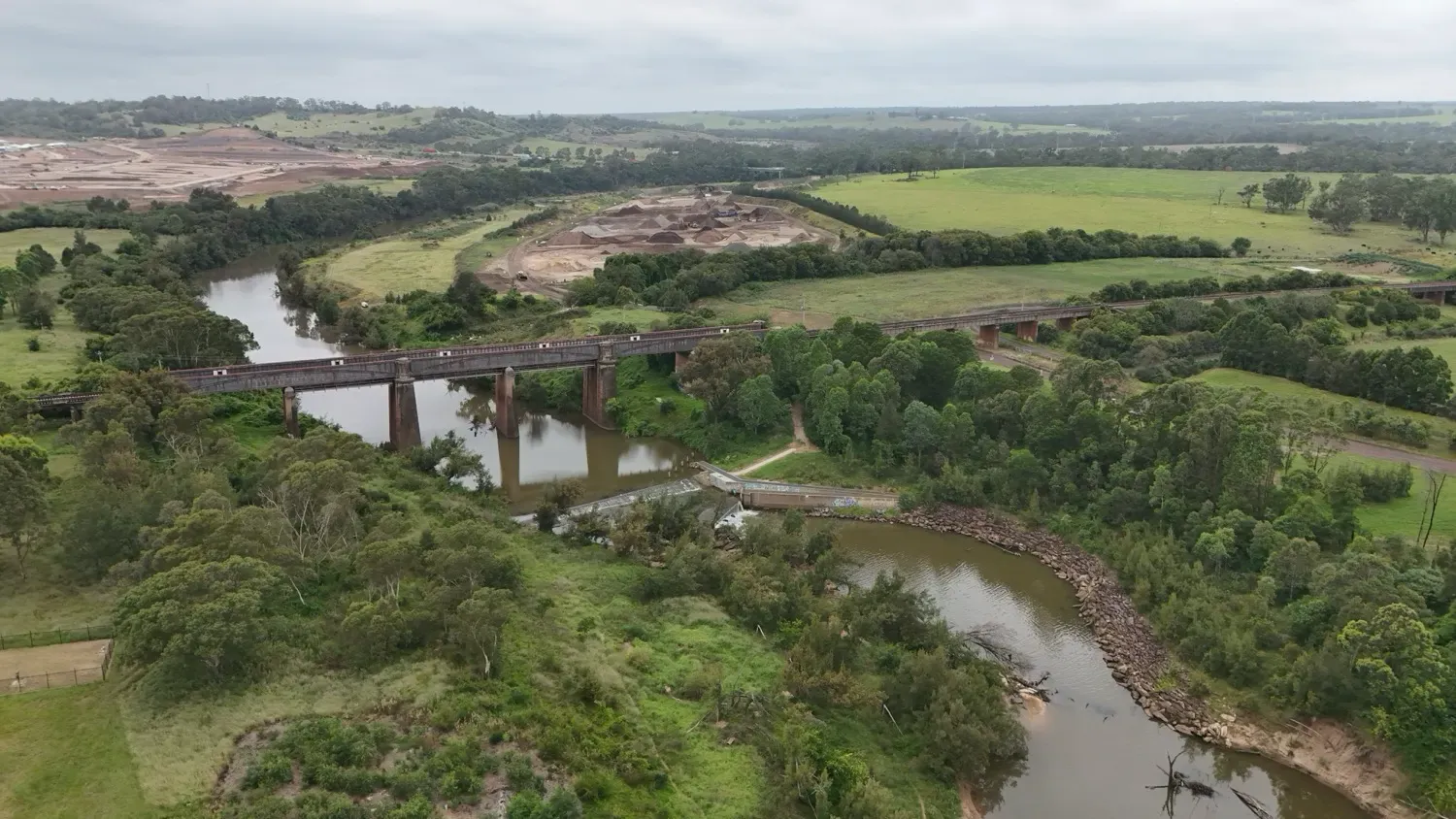
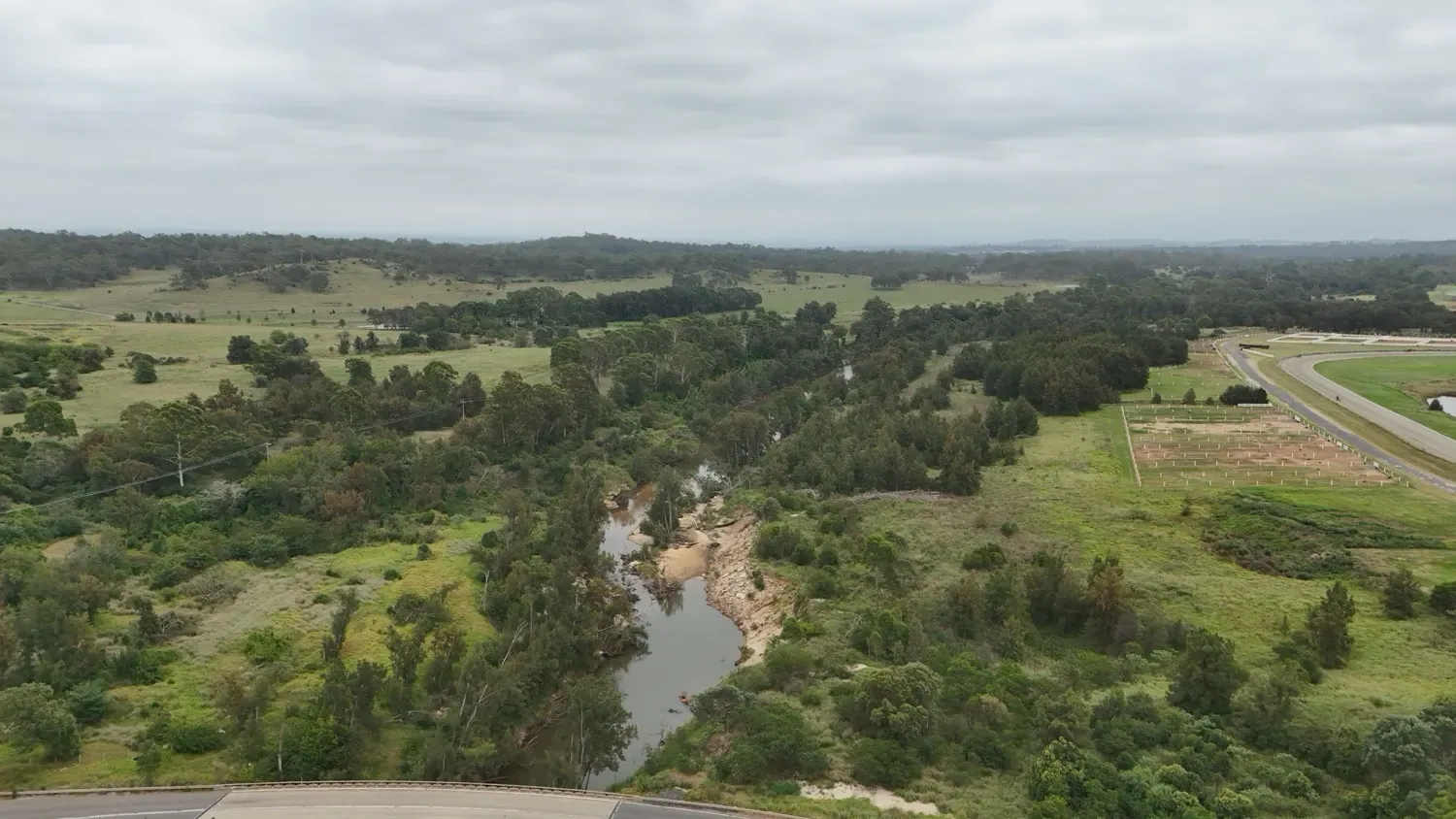
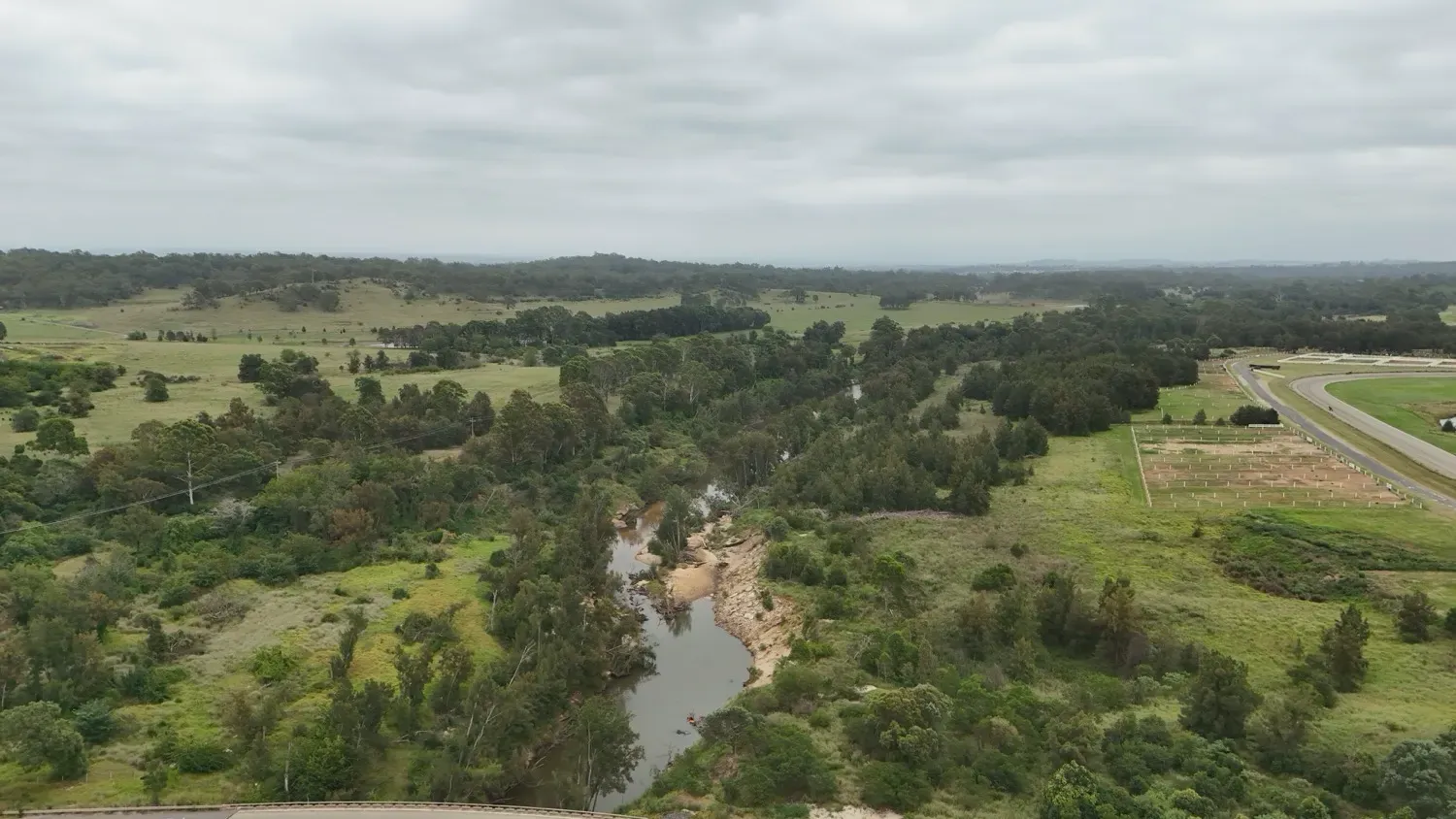

Still shots taken with the DJI Flip
Because the camera is the other big win here. It’s a big step up from the Neo, with its larger sensor offering stunning 4K60 footage. The gimbal design means footage is smooth and stable, even with the drone moving around.
The 4x zoom is a nice touch, but to be honest, I think the Flip is best served when it’s pulling in stunning, wide-angle vistas.
Because the Flip has larger propellors, it doesn’t make as much noise as the Neo, either. It’s not quiet by any means, but it’s not distractingly loud, either.
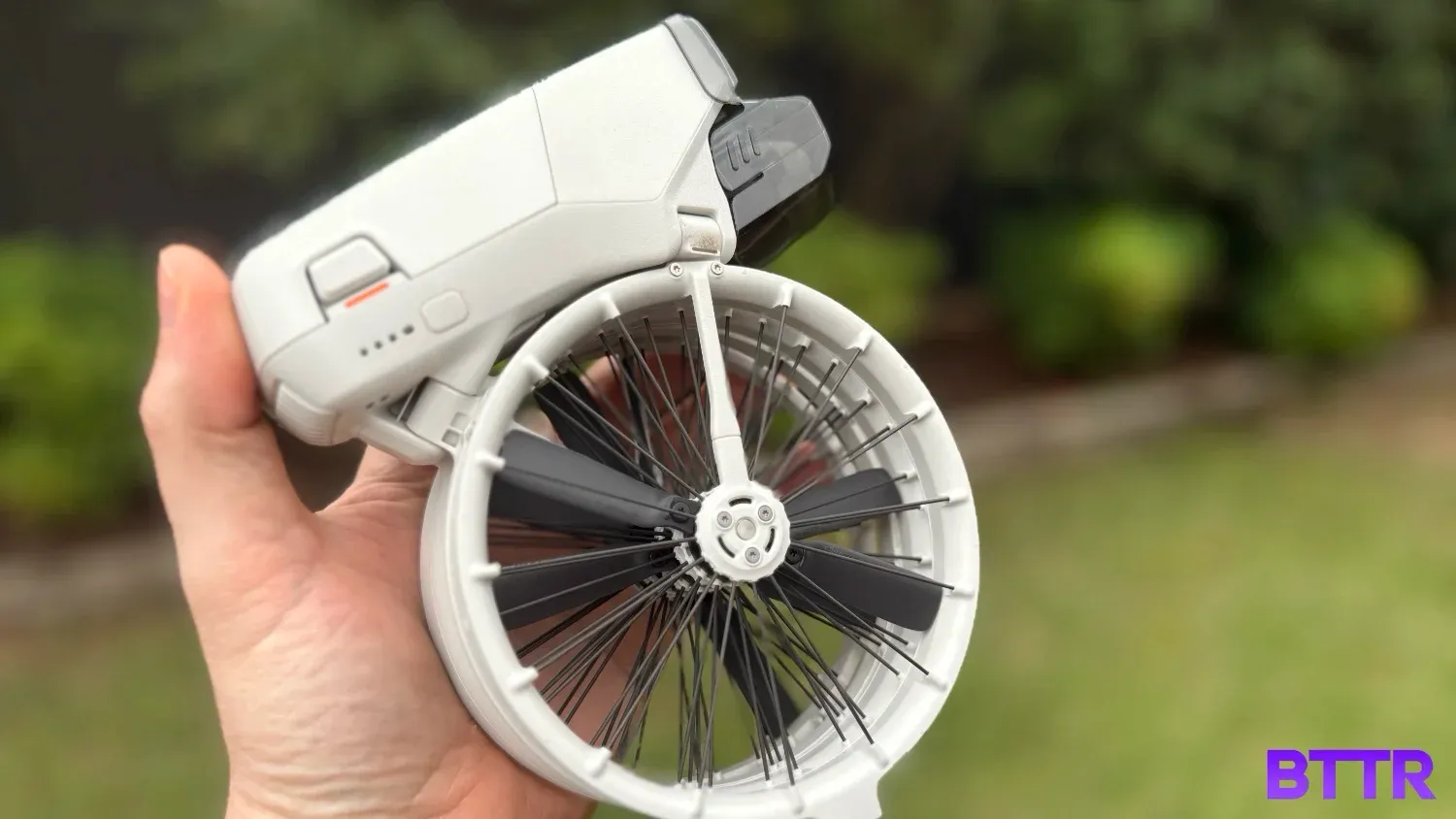
What could the DJI Flip improve?
The Flip only has 2 GB of onboard storage. You can plug in a MicroSD card easily enough, but I truly wish you didn’t have to. When you’re filming at 4K30, I was getting less than five minutes of footage on the in-built 2 GB. I understand why on-board storage is so limited, but it’s a disappointment – make sure you factor in the price of a larger microSD card with your purchase.
I also want to call out that while the Flip is noteworthy for boasting both forward facing and downward facing sensors for proximity detection and obstacle avoidance, it doesn’t have anything detecting collisions on the side or behind.
This could lead to problems with some automatic recording modes like Circle or Dronie, or even Follow if you’re walking towards the drone and it’s moving backwards.
It is understandable given the drone’s price. But it’s definitely worth being aware of before investing.
The other challenge I found was in recording audio. You can partner your Flip with your smartphone and use its microphone – or a connected Bluetooth mic – to record audio while the drone shoots. It then algorithmically removes the sound of the drone from the footage.
But the digital editing is obvious. The audio quality from a DJI Mic 2 paired with my iPhone while shooting sounded off.
And while this is 100% user error, when I switched from my phone to the DJI RC 2 controller in the Fly More package, I forgot to transfer the Bluetooth connection of the Mic 2, so all my videos have no sound.
Given this drone is pitched towards content creators, it’s something to be aware of.
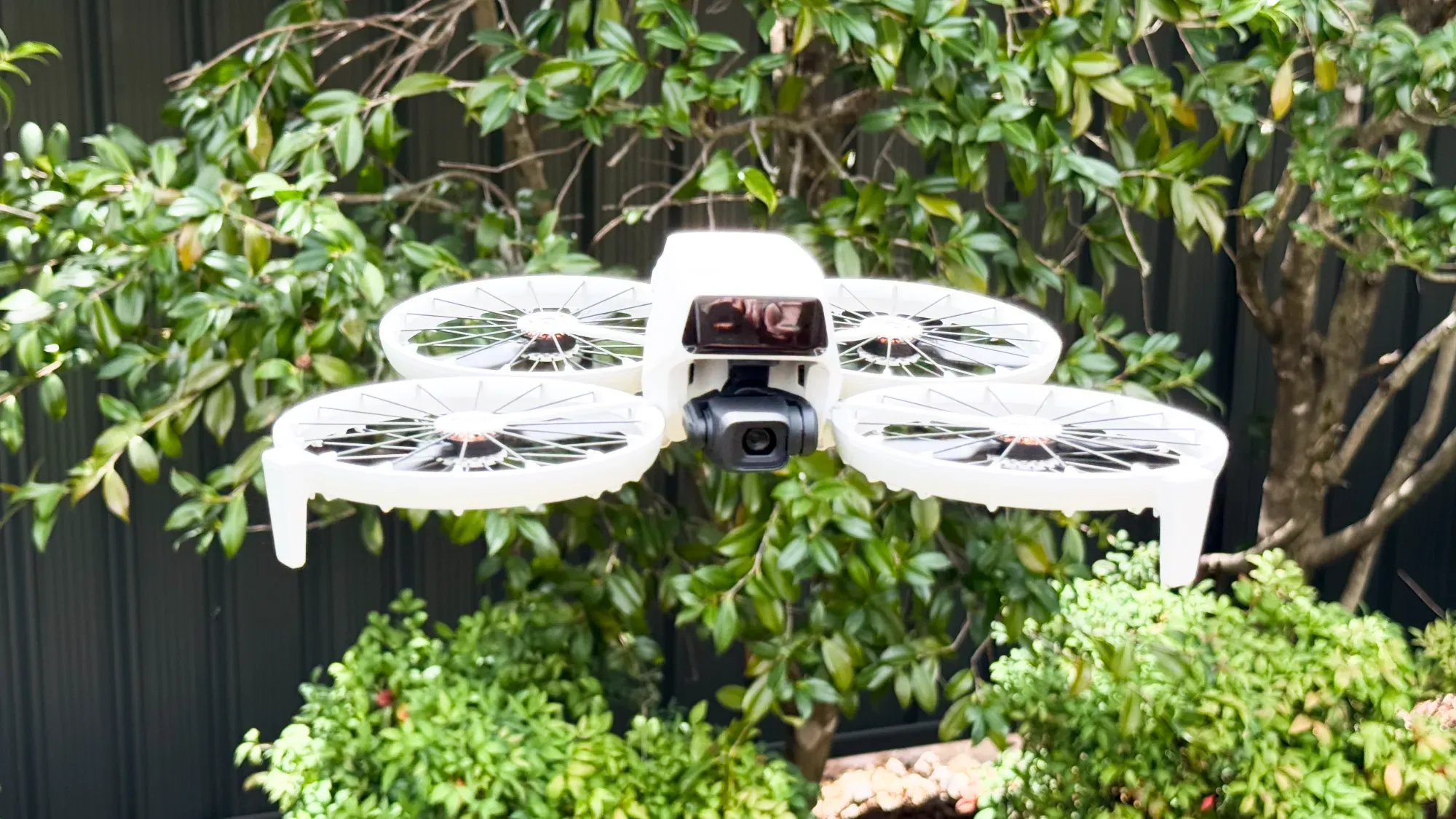
Verdict
DJI is on a hot streak with its consumer drones at the moment. The Neo was a game changer, giving simple controls to allow for single person video recording, and the Flip extends that functionality with better battery life and a better camera.
I do think there’s an opportunity to create a better audio recording system for content creators wanting to use the DJI Flip (or Neo) to help them create videos single-handedly. And if that’s the only use-case you have for a drone, then the Neo may be a better option.
But if you want hands-free control and the ability to capture excellent footage, then the Flip is a better choice. Its camera is superior, and the battery life is way more reliable.
Opting for the Fly More pack makes sense, though it does make the purchase a lot pricier, and you’ll still need to factor in the cost of a MicroSD card as well.
Buy the DJI Flip online
Consider showing your support with a donation.
